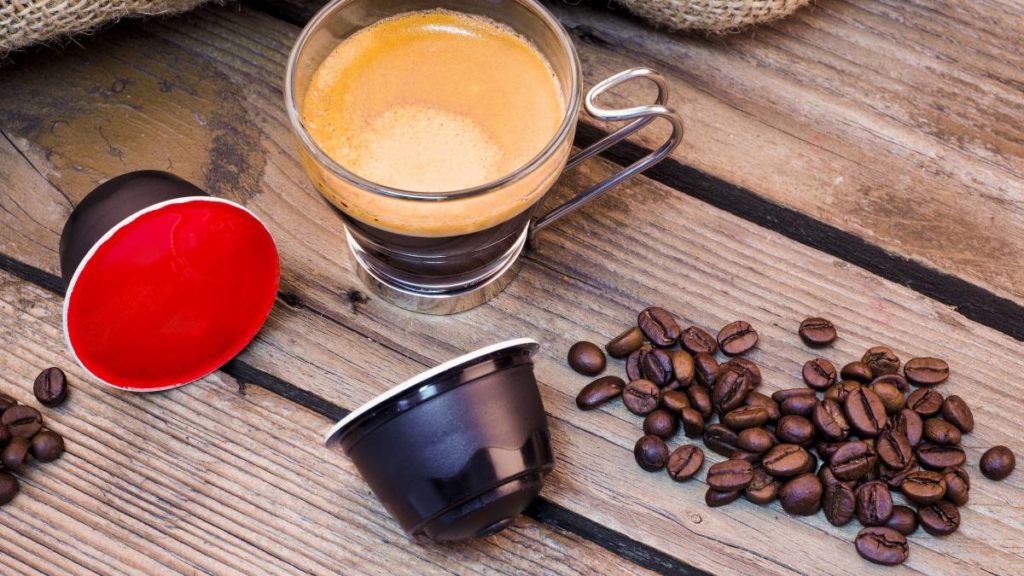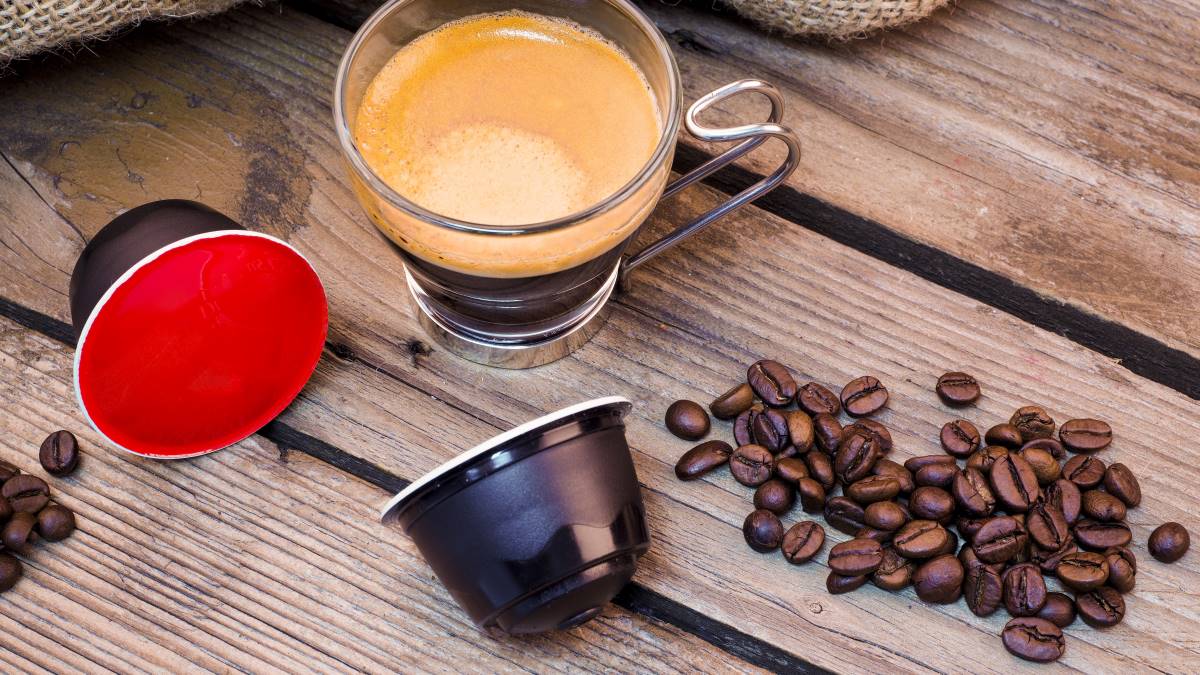
Recycling Mystery: K-Cups & Other Coffee Pods

There’s no doubt that single-serve coffee makers are downright convenient. Java drinkers can make just one cup of coffee to their exact liking while their housemates, office mates, or clients can make coffee (or tea, hot chocolate, chai) to their own personal tastes. No more arguments over how dark or light or which flavor to brew the community coffee pot. The major downside to a single-serve coffee maker is the plastic pod that remains after you make the coffee. There are many brands of single-serving coffee makers on the market and a few different types of little pods that hold that delightful, personal, single-serving of coffee grounds. Unfortunately, that single-use coffee pod is very hard to recycle.
This article contains affiliate links. If you purchase an item through one of these links, we receive a small commission that helps fund our Recycling Directory.
Keurig’s Efforts
Keurig was one of the first single-serving coffee makers on the market (if not the very first). The company knows that the waste from its disposable K-Cup coffee pods is a problem and wants to do better. So they’ve made some changes to make K-Cups recyclable. Keurig now makes K-Cups from polypropylene, identified by the #5 plastic resin code. Unfortunately, since 2018, when China stopped accepting contaminated recycling from the U.S. (and other countries), polypropylene is not recycled in all municipalities.
In addition, the small size of the pods presents a problem for the machines at the material recovery facilities (MRFs) that sort your recycling to send to recyclers. Commonly, MRFs can’t accept items smaller than single-serving yogurt cups because smaller items can jam the machinery and disrupt operations. While Keurig released a new “Easy-peel” lid to make the #5 plastic pods easier to recycle, not all pods have these lids, which consumers must separate from the pods before recycling (MRFs are not equipped to do this).
K-Cup and Pod Recycling
If you’re a Nespresso drinker, there’s good news: The company offers free recycling of their aluminum capsules. Simply take your capsules to a designated collection point at a Nespresso retailer or ship them back to the company using the Nespresso-UPS recycling program.
For other brands, the news is less rosy. There is a slight possibility that local recycling systems will accept single-use pods. Ask directly and specifically at your local recycling center or municipal waste hauler. Before recycling, be sure to take apart the pods — the Recycle-A-Cup cutter can make it a bit easier. Once separated, recycle the #5 plastic cup and aluminum lid — if your local service accepts them, that is. And be sure to compost the coffee grounds and filter.
However, more than likely, if coffee drinkers want to keep using single-serving coffee pods, they’ll need to pay to recycle the waste. Both Keurig and TerraCycle offer mail-in recycling services for a fee. Neither option is cheap and both are marketed to corporate users, not individual households. Both services will separate the materials, recycle the plastic and aluminum components, and compost the coffee (or tea) grounds and the filter.
Compostable Pods
Compostable coffee pods seem like a more sustainable option, at least on initial consideration. Unfortunately, compostable pods require a commercial composting service and are unlikely to break down in a backyard compost bin. Yet even if you have access to a commercial composting service, this may not be the best option as most commercial operations in the U.S. are not equipped to process compostable packaging. Never put these in your commercial compost bin unless you have confirmed that your local provider accepts them. Putting the wrong materials in the bin will disrupt the composting operation.
Reusable Pods
Another option is to purchase reusable coffee pods, such as the Keurig My K-Cup. There are multiple models of reusable pods on the market for the many different brands of single-cup coffee makers (look into highly reviewed Perfect Pod or JavaJig along with a measuring scoop). Java drinkers simply fill the pods with ground coffee and insert the filled pod into the machine to make their brew. There’s just the extra step to clean out the pod for reuse.
Beyond the Pod: Greener Coffee-Making Options
If you’re looking for a new way to make your daily morning pick-me-up without coffee pod waste, ditch the Keurig (well, give it away or recycle it) and consider one of these options. A reusable pour-over filter is waste-free, easily brews just one cup, and is likely the most affordable choice. A French Press has built-in metal filters and is extremely durable. Drip coffee makers use either reusable metal filters or paper filters that are usually easy to compost in a backyard compost bin. And the old-school school percolators last forever, no filter waste involved, just dump the grounds in the compost.
Originally published on September 15, 2021, this article was updated in October 2022.